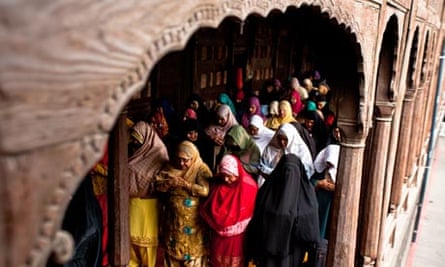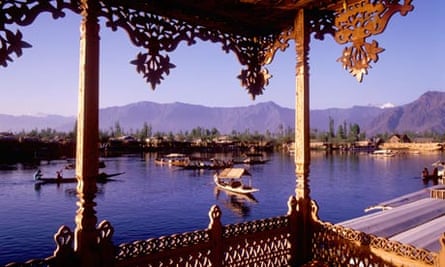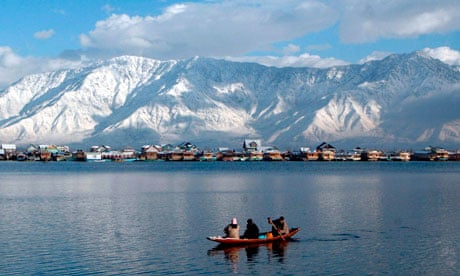The slow rehabilitation of Kashmir as a travel destination took a major step forward last week, when the Foreign Office eased its travel warning for Jammu & Kashmir. Warnings against visiting the cities of Jammu and Srinagar and the road between them were lifted but remain in force in the rest of Kashmir, including trekking destinations in the Pir Panjal mountains and the well-known ski resort of Gulmarg.
Tourism in Kashmir collapsed following the 1995 abduction of six western men, including two Britons, Keith Mangan and Paul Wells, who were taken hostage by Islamist group Al-Faran. One American tourist escaped, but a Norwegian, Hans Christian Ostrø, was beheaded. How the other four died is uncertain, although Indian security services have been implicated.
Numbers of foreign visitors have gradually increased since the turn of the millennium, a process boosted by Pakistan's withdrawal of support for militants in the mid 2000s. But the proportion of British tourists has remained low, because, according to chief minister Omar Abdullah, of the FCO's travel advice.
Although political tension remains high, with a reported half a million Indian troops garrisoned in the state, no foreign tourist has been killed in a terrorist attack in Kashmir since 1995. Indian security forces are much less of a presence on the streets of Srinagar, although accusations of human rights abuses continue.
The UK is the third government to lift advise against travel to Kashmir, following similar decisions by Germany and Japan, and reflects an improving security situation. More than 3,000 foreign tourists visited Srinagar in October 2011 alone. Increasing numbers of independent travellers have been visiting the region over the last decade.

Adventure travel specialist Wild Frontiers has been taking organised groups to Kashmir since 2005, believing that the travel advice was overcautious. "We'll be stepping up our operations in Kashmir," says Jonny Bealby, the company's founder. "Since we started operating there the situation has just got better and better. In a way, the FCO's decision has validated our stance."
Bealby says they had been expecting the decision, and that it marks the start of a gradual process of removing the travel advice from more parts of Kashmir. "They'll do this slowly," he says, "and it might take several years. We anticipate that the skiing resort of Gulmarg will be next."
Although it was possible to travel to Kashmir – either with a tour operator like Wild Frontiers or independently – the problem under the ban was that you were not covered by standard travel insurance policies. Now the FCO has lifted its warning, standard policies will once again be valid for travel to Srinagar and Jammu, although if you plan to venture beyond those areas you will still have to find a specialist policy to cover your trip.
Having trekked through the Pir Panjal with the company in 2009, I felt confident enough of Kashmir's security situation to return in 2011 with my wife and our two teenage children following a trek in Ladakh.
The houseboats of Dal Lake are blissfully relaxing, providing you get the right one. We stayed at the New Crystal Palace, fattening up on three delicious meals a day prepared by the boat's graceful and attentive manager Din, and then sunbathing on the porch like replete anacondas.

The lake is the real draw in Srinagar, and the authorities claim they are fighting hard to keep it clean. Paddling slowly round it on a shikara, birdwatching or visiting some of the lakeside craft shops, is as much as many tourists seem to need.
If you can drag yourself away, there's plenty to see in Srinagar, including the Khanqah of Shah-Hamdan, the prettiest mosque I've seen in India, with its coloured glass and papier maché revealing Muslim Kashmir's central Asian roots.
Non-Muslims can only peek through a window of the Khanqah, but you can enter the Pir Dastgir Sahib, a beautiful Sufi shrine nearby, also decorated with papier maché.
The kids loved people watching in the dreamy Shalimar Gardens, which Jahangir Khan built for his wife Nur Jahan in 1619. We also toured the marvellously eccentric Sri Pratap Singh museum with its moth-eaten stuffed animals and beautiful miniatures.
The railway between Srinagar and Jammu won't be completed for several years, but there are flights from Delhi and it's possible to take a taxi from Jammu station. With a rail link, some travel operators worry that Srinagar may become too popular, and its peerless lake polluted. But for now, after more than two decades of violence and raw politics, the future looks bright.

Comments (…)
Sign in or create your Guardian account to join the discussion